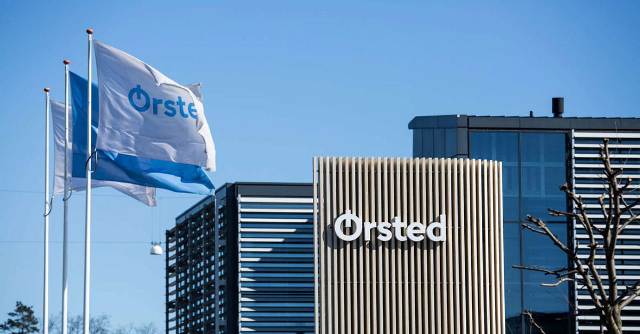The U.S. Bureau of Ocean Energy Management (BOEM) has issued a work-stop order on Orsted’s $1.5 billion Revolution Wind project, dealing another blow to the offshore wind industry.
The wind power project, which was 80 percent complete with 45 of its planned 65 wind turbines installed, was expected to deliver clean electricity to 350,000 homes in Rhode Island and Connecticut starting in 2026.
This marks BOEM’s second suspension of a major offshore wind farm in 2025, following the halt of Equinor’s Empire Wind 1 project off New York in April. The decision aligns with President Donald Trump’s pushback against renewable energy, citing concerns about offshore wind’s cost, reliability, and environmental impact.
Orsted Faces Financial Pressure Amid U.S. Offshore Wind Setbacks
Despite the setback, Orsted — the world’s largest offshore wind developer and 50.1 percent owned by the Danish state — reaffirmed its commitment to U.S. renewable projects.
Earlier this month, the company announced a $9.4 billion rights issue to strengthen its balance sheet, following what it described as “material adverse developments” in the U.S. wind market.
Orsted also scrapped the planned partial divestment of its Sunrise Wind project in New York. The Danish Finance Ministry, which supports the capital raise, said the BOEM suspension fell within the company’s expected risk profile.
The suspension immediately rattled investors. Orsted shares plunged 17 percent on Monday, reaching a record low of 173.4 Danish crowns ($27.15). The company’s market value has collapsed by 87 percent since its January 2021 peak, driven by surging costs, rising interest rates, and persistent supply chain disruptions, Reuters news report said.
Political and Diplomatic Dimensions
Analysts suggest the Revolution Wind suspension could still be overturned. Equinor’s Empire Wind 1, halted earlier this year, eventually resumed after diplomatic negotiations led by Norway.
Offshore Wind Industry Outlook
The suspension underscores the growing political risks in the U.S. offshore wind sector, already facing rising construction costs, inflationary pressures, and uncertain policy support.
Analysts warn that the halt of Revolution Wind could undermine Orsted’s rights issue and broader investor confidence. AlphaValue analyst Pierre-Alexandre Ramondenc called the U.S. decision “political hostage-taking,” given the project’s advanced stage.
Still, industry watchers note that the suspension may prove temporary. Much like Empire Wind 1, Revolution Wind could resume operations following political or legal resolution, though timing remains unclear.
Key Suppliers for Revolution Wind
Siemens Gamesa Renewable Energy (Turbines & Maintenance)
Turbine Supply: The project uses 65 Siemens Gamesa 11.0-200 DD turbines, each rated at 11 MW — a central technology driving the wind farm’s capacity.
Operations & Maintenance: Siemens Gamesa is also contracted to perform operations and maintenance once the turbines are operational.
Nexans (Subsea Export Cables & Installation)
Export Cable Supplier: Nexans holds a contract to supply and install the submarine export cable system that connects the wind farm to the onshore grid.
Manufacturing Footprint in the U.S.: Their Charleston, South Carolina facility is manufacturing cables for Revolution Wind — a milestone underscoring investment in the American offshore wind supply chain.
Installation Technology: Nexans will use its cable-laying vessel, the Nexans Aurora, capable of deep-water laying and simultaneous laying and protection — optimizing environmental impact.
Boskalis (Foundations & Offshore Substations)
Orsted and Eversource awarded Boskalis the contract for the transportation and installation of foundations and offshore substations, as well as installation of scour protection measures for Revolution Wind (and South Fork Wind).
Baburajan Kizhakedath

